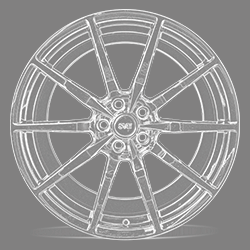Not a paid review. A forum post just like yours by a guy that sells all kinds of shocks.
Could you link to the thread?
In fact, in that particular instances, the OP chose Ridetech coilovers based on Sutton's advice. As for the tech. That has been established and explains why JRI are dominating in all sorts of racing whether it pro-touring or American Iron.
What is the source for that claim, and what is the evidence behind it?
Further your technobabble makes no sense at all and neither does your invocation of Richard Feynman. If your argument is that Cortex JRI struts are really twin tubes being foisted on the public as a result of some massive fraud, then I have to disagree based on personal observation. As for "reality taking precedence over public relations," I am afraid that you are a victim of that because JRI shocks are now and have been for a few years the leading dampers for the application that this forum is dedicated to, corner carving. That is a generally accepted fact among several classes of racers from off road to motorcycle, to Pro-touring, autocross and road racers.
I'd love to see the evidence supporting that.
Regardless, twin tube versus monotube today seems more like a religious debate than anything else. Modern manufacturing techniques (e.g.,
laser drilling) are able to control orifice sizes down to micrometers, so the damping precision argument probably doesn't hold the weight it used to. Sure, the mass produced inexpensive Koni Yellow dampers may not be immune to that argument, but the JRIs almost certainly are. As for the heat and cavitation arguments, they are dependent in part upon the properties of the fluid used in the dampers being compared. All else being equal, the monotube shocks will be more resistant to cavitation. But what
really matters isn't which is more resistant to cavitation, it's whether or not the resistance of the shock in question is sufficient to prevent cavitation under the conditions it'll be used. If the resistance is sufficient, then it doesn't matter whether the shock is monotube or twin tube. If it's not sufficient
and it's a twin tube shock, then going to a monotube shock with the same characteristics will help. JRI twin tube dampers wouldn't be competitive
at all if they didn't have sufficient fade resistance in most circumstances.
In any case, to casually dismiss a twin-tube design as being unsuitable or uncompetitive is an insult to the designer. The only way to know how well the damper is going to work is to actually run it, and compare against other dampers under the same conditions (car, driver, track, weather, etc.). For the kind of money the JRIs command, and given the amount of time they've been around, it would be insanity to dismiss them as being uncompetitive against their monotube competition.
And incidentally, the dampers have held up pretty well despite the thin racing seals. They are not delicate units.
How long have you had them for?
The OP asked which was the best coilover. For getting the best time at the track or superior performance: JRI. For giving you significantly inferior performance while lasting longer without repair: everything else I guess but I also blew out two Koni Yellows in a year just driving on the street and three in total. So who really knows.
What springs were you on when you blew out your Konis, and how many miles did you put on them before they blew (and how long did you have them for)? I'm now on Boss 302 springs (Laguna Seca out back, standard up front), so I'm quite interested in the answer to this.


 I will be at VIR in Feb with helmet in hand.
I will be at VIR in Feb with helmet in hand.